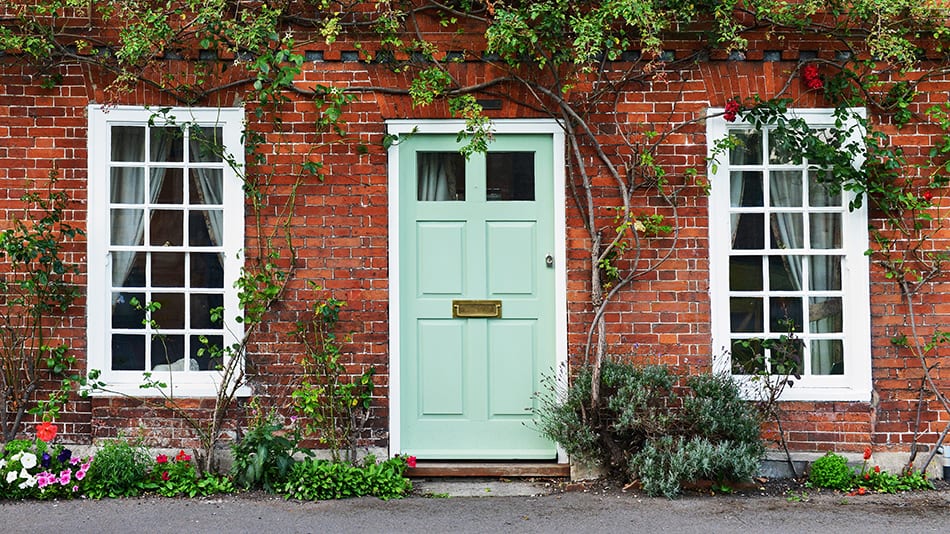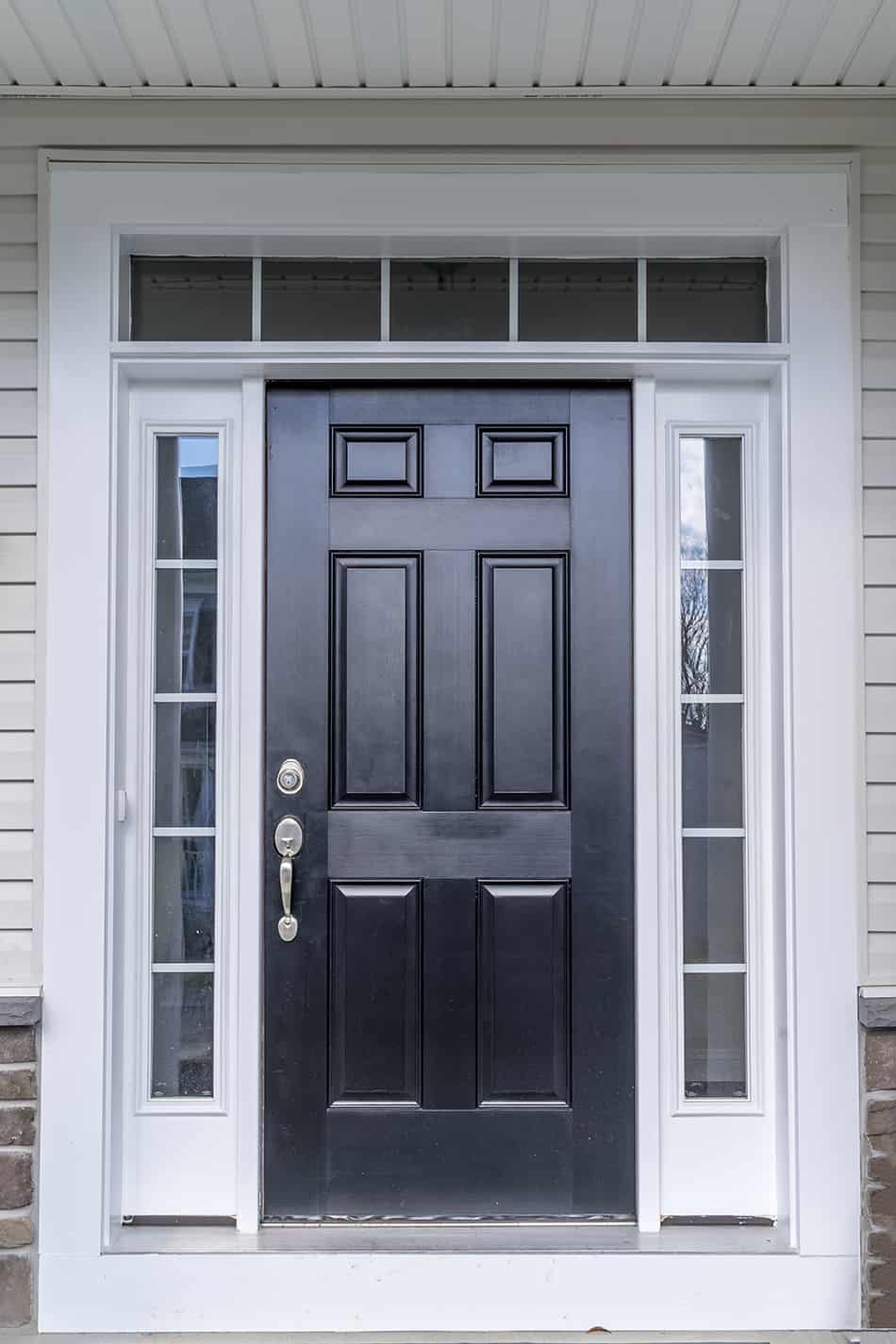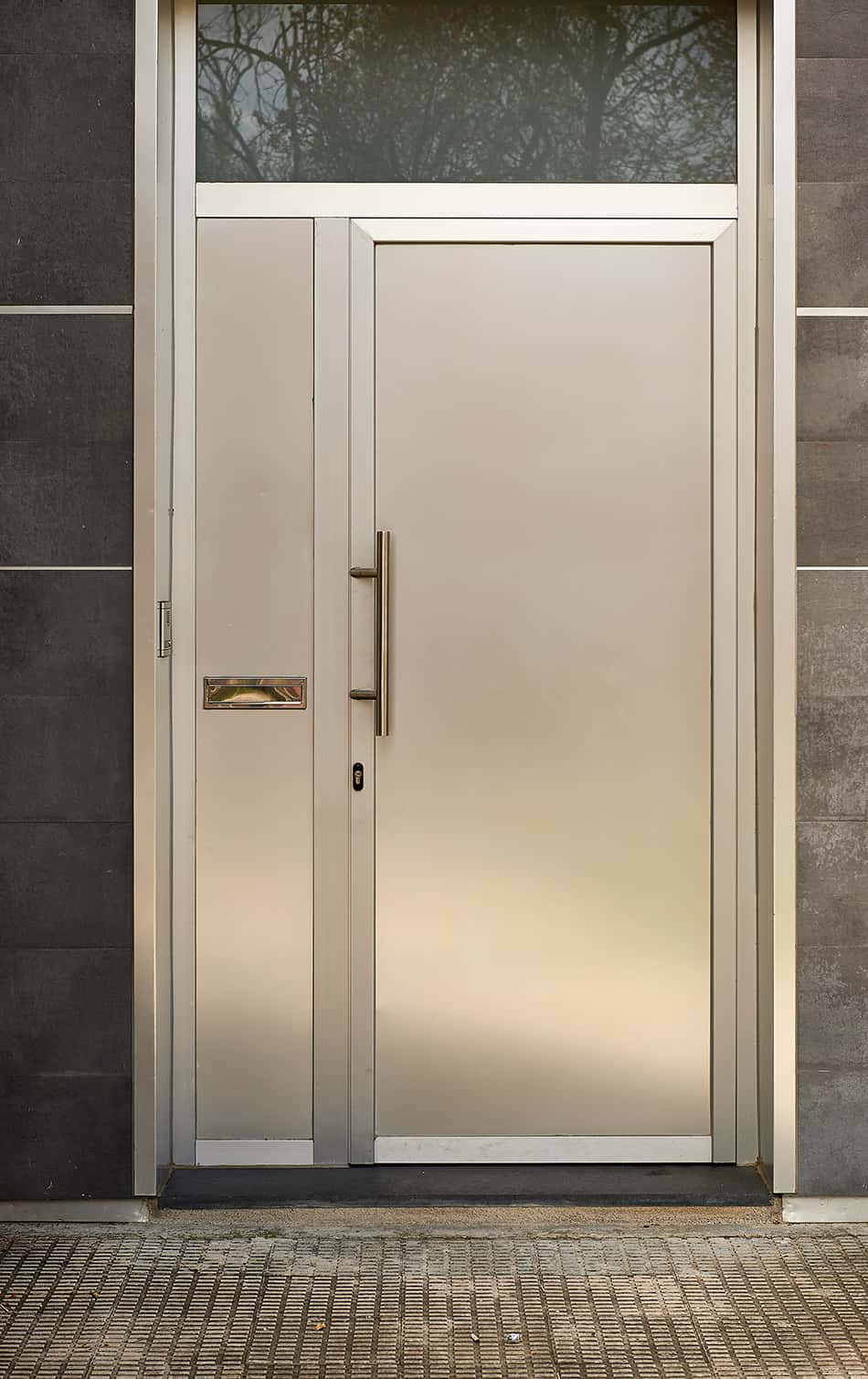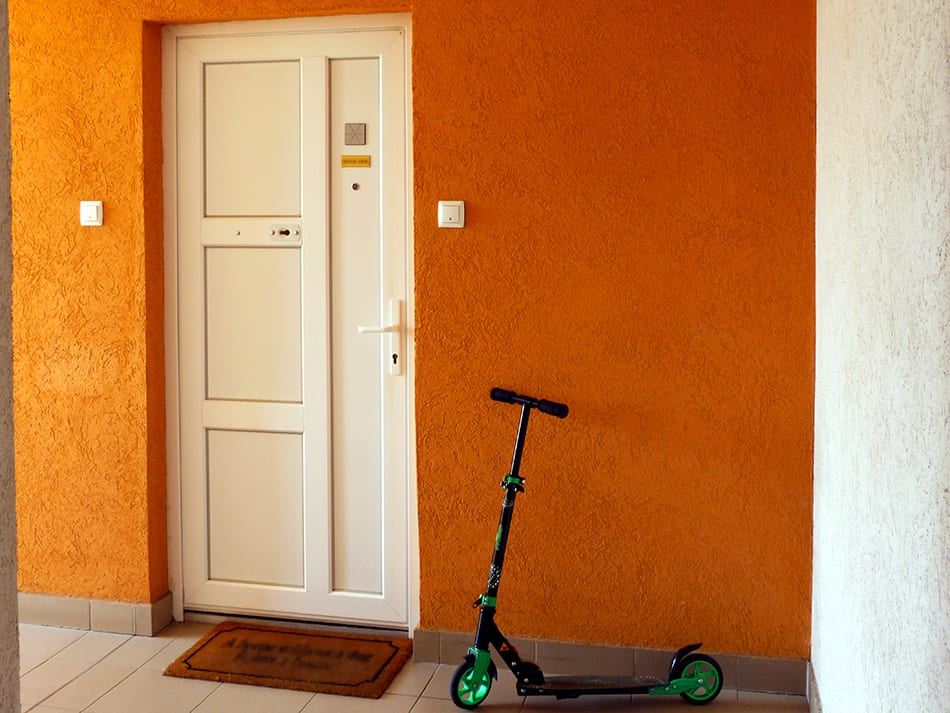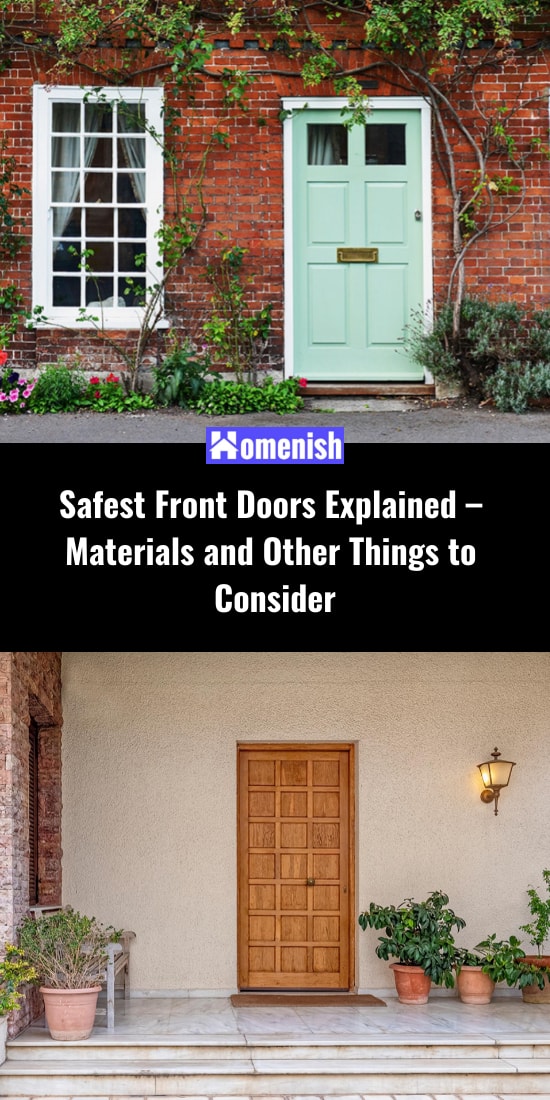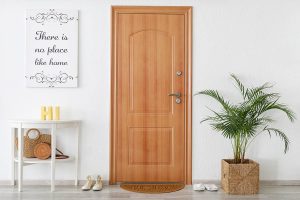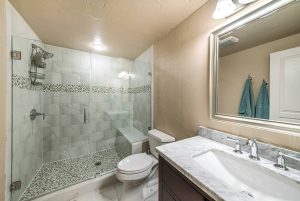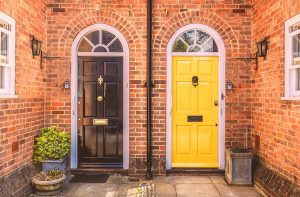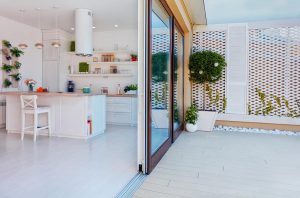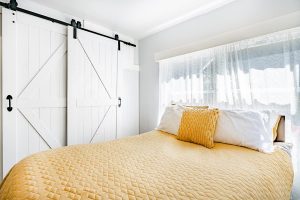Many homeowners tend to overlook the importance of the front door because they are preoccupied with other things like which color to paint their house with or what kind of tiles to use in their living room.
However, the front door should never take the backseat. After all, it is the first line of defense of the house. As a homeowner, you should feel like you’re entering a safe place when you close the front door. As such, you should always consider the safety and strength of the front door.
This leads us to the question: “what is the safest front door?” If you’re looking to replace your front door or building a new house, continue reading. This article will run down the list of materials that are considered safe for a front door. Also, get to know the various considerations in selecting a front door.
Types of Door Materials
While we can leave the styles and designs of front doors to your personal preferences, you’ll have to narrow down your material choices for front doors into four main categories. These are wood, steel, glass, and fiberglass.
Wood
It’s safe to say that among the front door materials listed in this article, wood has been used the longest. And not surprisingly, it remains a favorite choice among many homeowners despite the emergence of other front door materials. One reason is that there are many design options available for wooden front doors.
You can custom craft a wooden door in virtually any size or shape. You can also incorporate whatever carvings or panel configurations you have in mind.
Another misconception about wooden doors is that it warps. But that’s no longer an issue these days as wooden doors are now engineered to last for many years. The outer layer of wood front doors is a thick veneer. Still, the material is designed to match the lifespan of a house.
Some of the popular wood species for front door materials are mahogany, white pine, and Spanish Red Cedar. Mahogany could be the most popular wood species for doors because of its strength and durability. It is highly regarded for its rich and warm colors.
White pine, meanwhile, is preferred for its decorative qualities, although it isn’t the sturdiest wood species. Spanish Red Cedar is like mahogany, noted for its durability and strength. It also finishes well.
In terms of safety or security, a wooden door is safe. People wrongly think that it is easier to break in through a wooden front door than, say, a fiberglass door. The wooden door itself is strong and hefty enough to resist an attack.
Instead of the front door material, you’ll have to reinforce the latch-side jamb because this is the weak link or part of the door. How do you prevent a strong kick from splitting the jamb? One way to do so is to install a security strike plate with three-inch screws into the nearby stud.
Fiberglass
What kind of material is fiberglass, you might ask. Fiberglass is essentially plastic with strands of glass fiber. In short, it is a type of reinforced plastic. Now, the next question on your mind might be: “is fiberglass front door safe?”
The short answer is yes, fiberglass is also a strong and secure material for your front door. Its composition makes it practically shatter-proof. It would be difficult for a burglar to fracture and break in a fiberglass front door.
Fiberglass doors also offer top-notch security as long as they are properly installed. Fiberglass doors with composite frames have twice as much screw-holding power as wooden doors. And fiberglass doors won’t deteriorate over time. You won’t have to worry about repairing it because fiberglass won’t rot or rust out.
Aside from its durability, you’d love the versatility of fiberglass doors. Like wood, it is available in a wide range of colors, styles, and finishes. Let’s just say that you should be able to find a fiberglass door that would fit the look of your home exterior. And should you decide to change your home exterior, you can always have a fiberglass front door repainted.
Another advantage of installing a fiberglass front door is the protection it gives against the elements. Most fiberglass front doors have an insulated core. You’ll have to shell out more money for a fiberglass entry door compared to a wood front door, though. But the long-term benefits of fiberglass front doors may justify the relatively high costs.
Steel
This may very well be the safest material for a front door. But not too many homes have steel doors which lead to misconceptions about steel as an entry door material.
One of these misconceptions is that steel doors are made of solid steel. You would be surprised to learn that steel doors are commonly made of a polystyrene or polyurethane core with steel between 16 and 24 gauge serving as the outer covering.
Now you might wonder why solid steel isn’t used, right? One primary reason is that solid steel is so heavy that it would tear out the hinges of the door. Another reason is that, like most metals, steel is an excellent conductor of heat which makes it a poor choice for an entry door during the summer months. The core acts as a thermal barrier for the steel skin or covering.
Steel front doors are more secure and stable than wooden and fiberglass doors. Unlike wood, steel won’t warp or crack when impacted. It’s almost impossible for burglars to break in when you have a steel front door.
Aside from being secure, another important characteristic of a steel door is its impeccable durability. It can last for a long time, especially when well-maintained. It won’t warp and distort, unlike a wooden door.
And steel can tolerate different weather conditions. It can stand up to strong winds and rainstorms without any issue. Steel doors also have a fire rating. One with a 20-gage skin can resist fire for up to 20 minutes.
Surprisingly, steel is more reasonable in terms of price compared to wood. You can get a steel front door that’s less expensive than a wooden door.
You should also know that there are downsides to installing steel doors in your home. One is that DIY installation is practically out of the equation because of their weight. Steel may be strong and durable, but it’s not invincible. It can be dented if hit by something substantial. And if the paint gets chipped off at the dent, rusting can soon follow as the metal would be exposed to moisture.
Glass
You may have considered installing a glass front door in your home. You’re intrigued by the prospect of waking up in the morning with the sunlight streaming into your living room. You think it’s uplifting and energizing. But you’re also wary that glass isn’t a safe material for a front door.
While not as strong as steel or even wood, glass can also hold up its own against burglars. If you’re interested in getting a glass front door, consider a double-paned glass or double-glazed glass. It can provide a higher level of security because it would be harder for burglars to break it. The double-glazed glass exterior door is also energy efficient and can reduce noise coming from the outside.
Aluminum
In case you want a metal front door but can’t afford the exorbitant price of a steel entryway, then you could opt for one made of aluminum. It’s a cheaper option that should still provide you with enough security, although not as great as a steel front door.
Extremely robust and durable, aluminum is an ideal material for a front door. It can withstand attacks by burglars. It is also designed to last for many years. Plus, it has excellent thermal insulation properties. Finally, little maintenance is required to keep aluminum front doors looking good for an extended period.
Compared to steel, aluminum is about a third lighter than steel. This makes installation less complicated than that of a steel door. Aluminum is also simple to finish, so updating the look of your door should not pose much of a problem. In terms of price, aluminum is much cheaper compared to steel because of the wide availability of the material. Aluminum is also easy to recycle, which further contributes to the low price of the said material.
Vinyl
Often used for patio door frames, vinyl could be the most affordable material for front doors. It’s not as safe, though, as the other materials in this list. Still, this could be a good choice if you’re looking for an energy-efficient and low-maintenance front door material. You’d have to choose from fewer styles and color options, though, when you opt for a vinyl front door.
So, which of these materials make for the safest front doors? Steel, wood, and fiberglass are the top three materials in terms of security, with aluminum, glass, and vinyl coming in at the second tier.
Things to Consider in a Secure Front Door
The material of the front door is just one factor that can affect the security of the entryway. There are other things to consider when selecting a front door. Below are some features that your front door should have to ensure that your home will be secured any time of the day:
Cylinder Guards
This is a fully beveled outset shield ring placed around the lock. It provides another layer of protection against prying. It is also an upgrade over standard mortise cylinders made of soft brass. The latter isn’t exactly the most secure front door feature because it is made of soft brass. Burglars can tear the cylinder out of the door by using a pipe wrench, special pliers, or another device. But with a cylinder guard, those tricks are almost impossible to pull off. Cylinder guards are made of steel and won’t be damaged by any hand tool.
Another advantage of installing a cylinder guard is that it secures the lock on the doorknob. While it’s supposed to be the most secure point of the front door, the truth is that it is often a weak point. A forceful kick or chop from a burglar can damage it. By installing a cylinder guard around the lock, you can prevent a burglar from opening the front door.
Solid Core
Regardless of the material you choose for a front door, make sure it is made with a solid core. This would give you peace of mind knowing that it can resist all forms of damage. And paired with reinforced locks, a door with a solid core could resist all types of brute entry.
Metal Frame
If you’re not inclined to construct a front door from full steel but wish for enhanced security, consider getting an entryway with a metal door frame. This is attached to the wall studs to ensure that the deadbolts and other locks are strongly attached.
Sure, you’ll be spending more as metal frames are heavy and need to be installed by a professional. But it’s a reasonable investment, especially when you consider that it will further enhance the security of your front door.
Security Hinge
The hinge used on the door would also determine how secure it is, particularly against experienced pros. The hinges should be installed on the inside of the frame. It should also have features like pins and locking screws to prevent break-ins. As much as possible, avoid hinges mounted on the exterior as this can be a security risk,
These are just some of the features you should install on your front door, regardless of the material you have picked.
Conclusion
The front door is the first line of defense of your house against intruders. It’s only reasonable that you use the strongest material for it, as well as incorporate various safety features for this entryway.
